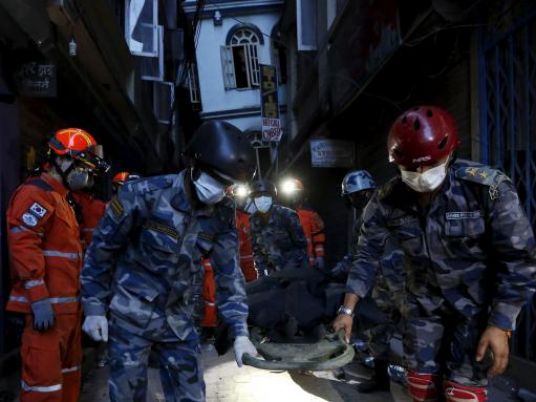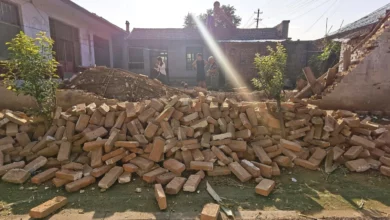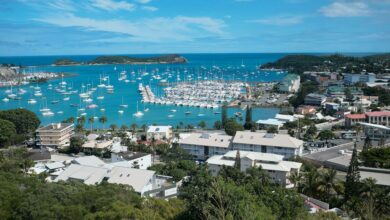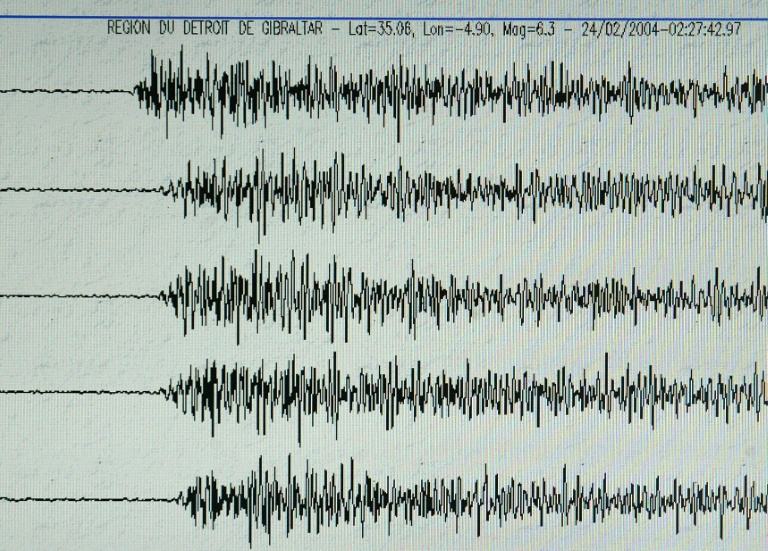
Three people were pulled out alive from the rubble of their home eight days after Nepal's devastating earthquake, an official said on Sunday, but rescuers have found about 50 bodies on a popular trekking route that was hit by an avalanche.
The current toll of 7,056 dead is likely to rise as an entire village was carried away by the avalanche and many more people are believed to have died, officials said.
A home ministry official said police and army rescued three people from the rubble in the district of Sindhupalchowk, northeast of the capital Kathmandu and one of the worst-hit areas in the country. No further details were immediately available.
In the northern Rasuwa district, a Nepali police team has pulled out the bodies of about 50 people, including some foreign trekkers, from the avalanche-hit area, officials said.
The entire village of Langtang was wiped out by the avalanche, said Ganga Sagar Pant, the head of the Trekking Agencies Association of Nepal, who has a representative in the area.
"All that is left is scattered belongings like bags and coats, all the houses have been thrown down the mountain," he said. "There is nothing left. I don't think anyone can survive that."
The village is on a popular trekking route and has 55 guesthouses catering to visitors. It was not clear how many people were there at the time of the avalanche and whether they were foreigners or local villagers.
None of the recovered bodies has been identified, said Pravin Pokharel, deputy superintendent of police in the northern district of Rasuwa. Pokharel, who led the police team, said the bodies were pulled out from under snow and ice on Saturday. Rescuers were to return to the remote area on Sunday.
At least 200 other people are still missing in Langtang, including villagers and trekkers, said Uddhav Bhattarai, the seniormost bureaucrat in the district.
"We had not been able to reach the area earlier because of rains and cloudy weather," he said by telephone.
Tulsi Prasad Gautam, the head of Nepal’s tourism department, said: "The death toll (of foreigners in Nepal) will go higher because in the Langtang area a significant number are still missing."
US Marines to help
US military aircraft and personnel were due to arrive in Nepal on Sunday, a day later than expected, to help ferry relief supplies to stricken areas outside the capital Kathmandu, a US Marines spokeswoman said.
Marine Brigadier General Paul Kennedy has said the delayed US contingent included at least 100 US soldiers, lifting equipment and six military aircraft, two of them helicopters.
The team arrives as criticism mounted over a pile-up of relief supplies at Kathmandu airport, the only international gateway to the Himalayan nation, because of customs inspections.
United Nations Resident Representative Jamie McGoldrick said the government must loosen its normal customs restrictions to deal with the increasing flow of relief pouring in from abroad.
But the government, complaining it has received unneeded supplies such as tuna and mayonnaise, insisted its customs agents had to check all emergency shipments.
"They should not be using peacetime customs methodology," the UN's McGoldrick said. Instead, he argued, all relief material should get a blanket exemption from checks on arrival.
Kennedy also warned against bottlenecks at Kathmandu airport, saying: "What you don't want to do is build up a mountain of supplies" that block space for planes or more supplies.
Nepal lifted import taxes on tarpaulins and tents on Friday but a home ministry spokesman, Laxmi Prasad Dhakal, said all goods coming in from overseas had to be inspected. "This is something we need to do," he said.
Nepali government officials have said efforts to step up the pace of delivery of relief material to remote areas were also frustrated by a shortage of supply trucks and drivers, many of whom had returned to their villages to help their families.
Many Nepalis have been sleeping in the open since the quake, afraid of returning to their homes because of powerful aftershocks. Tents have been pitched in Kathmandu's main sports stadium and on its golf course.
According to the United Nations, 600,000 houses have been destroyed or damaged.
The United Nations said 8 million of Nepal's 28 million people were affected, with at least 2 million needing tents, water, food and medicines over the next three months.



